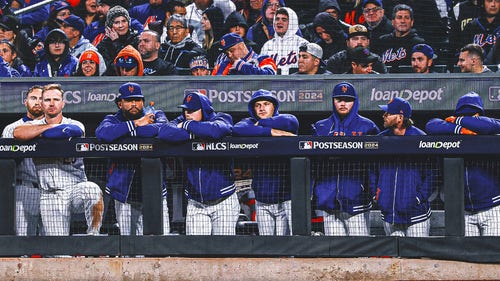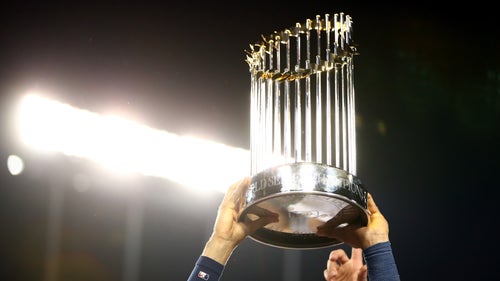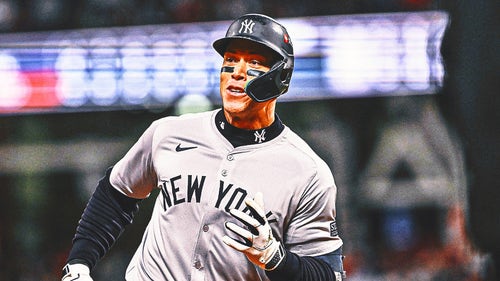
Diabetes presents challenges for athletes
A’s outfielder Michael Taylor is 6-foot-6, 250 pounds, a product of Stanford, “one impressive young man,” in the estimation of A’s general manager Billy Beane.
“With that brain and that body,” Beane says, “somebody got gypped along the way.”
Actually, it’s Taylor who got somewhat gypped, not that he views his life from that perspective.
Taylor, 24, is one of baseball’s top prospects, “a more athletic Jermaine Dye,” in the opinion of one rival scout.
He also is a Type 1 diabetic, raising doubts among some in the industry about whether he can reach his potential.
A number of diabetics have excelled in professional sports, from former Cubs third baseman Ron Santo to Hockey Hall of Famer Bobby Clarke to current Chicago Bears quarterback Jay Cutler.
Santo, in fact, enjoyed an accomplished 15-year career despite never having access to a glucometer, a medical device that diabetics use to monitor their blood sugar.
Taylor, who was diagnosed when he was 9, stands every chance of fulfilling his baseball destiny, not only because of advances in medicine, but also his commitment to controlling the disease.
“It’s really just about taking care of your body, doing the things you need to do to be as healthy as possible,” Taylor says. “If you do that, it’s really not that much different from a player who takes care of his body and isn’t a diabetic.”
In Type 1 diabetes, the body does not produce insulin, a hormone that converts sugar, starches and other food into the energy necessary for daily life, according to the American Diabetes Association.
Taylor says he checks his blood levels about 12 to 15 times per day, inserting a test strip into a meter, pricking his finger to draw blood, then applying it to the test strip. He generally injects himself with insulin five to six times a day.
The Phillies did not trade Taylor because of his disease; they needed to part with top young talent to obtain Blue Jays right-hander Roy Halladay last December, and did not want to move an even more highly regarded outfielder, Domonic Brown.
The Blue Jays also did not trade Taylor because of his diabetes; they simply viewed infielder Brett Wallace as a superior hitter, and sent Taylor to the A’s in a one-for-one exchange to compete the four-team Halladay blockbuster.
Still, questions about Taylor’s future persist.
“He is as diligent as anybody could possibly be about managing it,” Phillies general manager Ruben Amaro Jr. says. “The biggest concern we have with people who have diabetes is how they bounce back from injury.
“I don’t have any actual medical evidence on this. We have had scenarios in the past where someone will be injured and it would seemingly take those guys a little bit longer to recover. The recovery phase seemed to be a little more extended.
“Now, Michael Taylor, hopefully for his sake, he never gets injured. We think he’s going to be a heck of a major-league player. We just didn’t know how high his ceiling was going to be.”
To this point, injuries have not been a major issue for Taylor, who was the Phillies’ fifth-round selection in 2007.
Minor-league seasons consist of 140 games. Taylor appeared in 132 minor-league games in ’08 and 116 last season, missing time with an oblique problem.
In those two seasons, he batted a combined .334 with 39 home runs, each time playing at two levels.
“If he has good control of his diabetes, then he has a good chance to perform at a high level for an entire season,” says Dr. Robert Cuddihy, the medical director of the International Diabetes Center in St. Louis Park, Minn.
“There are plenty of examples of athletes who reached and maintained their pinnacles in their respective sports. All of those guys got injured. But the ones who are well-controlled and keep their blood sugar in a good range recovered just as well as other athletes.”
Not everyone is convinced. Not everyone reacts the same.
Blue Jays right-hander Dustin McGowan, who underwent shoulder surgery in July 2008, finally is on the verge of returning to the majors.
He wonders if he would have returned sooner if not for his diabetes, which was diagnosed after he underwent Tommy John elbow surgery in May 2004.
“Everything I’ve gathered from doctors, they say we don’t recover as fast,” says McGowan, who turns 28 on March 24. “It takes longer, even if we get cuts or blisters, it takes twice as long, three times as long, for it to heal.
“The shoulder has taken forever to heal up. It’s one of those things you try not to think about. But you almost can see it, see other guys have the same surgeries and they’re back playing faster.
“I think there’s a little truth to it.”
So does Dave Hollins, who was a major-league infielder for 12 seasons and learned that he had Type 1 diabetes after helping the Phillies reach the World Series in 1993.
Hollins, now a scout for the Phillies, says he was not part of the team’s decision to trade Taylor. He admits that he “pulls for” his fellow diabetics. But if he had been asked about Taylor, he would have voiced concerns.
“It’s hard enough as it is to play every day at the major-league level,” Hollins says. “Common sense says if you add an insulin-dependent diabetic to that equation, it’s going to be tougher than it is for the other guys. The body doesn’t recover the same way.
“I tip my hat off to him. I went through it. It’s not easy. You’ve got to take care of yourself. When the blood sugar goes up and down during games because of sweat, exercise, stress, you’re affected differently. You hope the kid’s talent overrides that. So far it has. As you get older in your 30s, that’s where it gets tricky.”
Taylor is not in his 30s. Unlike McGowan and Hollins, he had to manage his disease from the time he was a child. He developed resilience and discipline, qualities that serve him well as a professional athlete.
Cubs outfielder Sam Fuld followed a similar path — he was diagnosed as a Type 1 diabetic at 10 and preceded Taylor at Stanford.
“I’ve always made it a point of not letting it affect me,” Fuld says. “Last year I probably played about 250 games during the year, including 80 games in winter ball, 30 games in spring training and playing all the way into October.
“I think I’ve at least proven that it’s not going to hold you back, certainly not on a day-to-day basis or even throughout the course of a long season. I feel like as long as I’m staying on top of it, it’s not an issue.”
Santo, now a Cubs radio announcer, agrees.
Santo, 70, played from 1960 to ’74. He made nine All-Star teams, hit 342 home runs and won five Gold Gloves — all while using only his instincts to monitor his blood sugar.
Times have changed.
Santo recalls the Cubs expressing reservations about how Fuld would deal with injuries. But Fuld, like Taylor, is meticulous in his control of the disease. He has his routine “down pat,” Santo says.
“It’s a lot different today,” Santo says. “When you’re that young, you’re going to heal because you stay with that good blood sugar (level).
“Me, I couldn’t tell where I was. I was either too high or I could feel I was low. The reason everything happened to me was because I never had a glucometer to tell me what I was before I went out there or what I was after.
“Eventually, the side effects happened — losing both legs, open-heart surgery. But that’s not going to happen today. They control their blood sugars and know when to react. They can prepare for a nine-inning ballgame a lot easier.”
Taylor says his preparation for a 7 p.m. game begins the moment he awakens, usually around 10:30-11 a.m.
“I like to get up, get some insulin in me, eat something, sort of figure out how my body is going to react,” he says. “Every day is a little bit different.
“If you’re a little sick or under the weather, your body reacts differently. Sometimes it’s changes in the season. Maybe you’re worn down with where you are in the season, how much activity you’ve had the day before, how late you were up the night before.”
Taylor gears his entire routine toward being ready for the first pitch. He has sat out pre-game drills to adjust his blood sugar, but never missed part of a game.
In fact, his first hit at Triple A came when his blood sugar was low.
“I was proud of that,” he says.
When Taylor walks out to the field, he carries with him his testing kit and a small cooler filled with juices.
He does not wear an insulin pump, which allows users to receive small amounts of insulin throughout the day — and summon more when necessary — through a catheter just under the skin.
“It’s not something I really want to do,” Taylor says. “Having to move around with something on me, diving, stealing bags, sliding in, collisions at the plate — I don’t want the needle in my side when I’m playing.”
Taylor says he is “a little anal retentive” about his blood sugar, checking himself more than the average Type 1 diabetic. Any disruption in his day — from an extra pre-game drill to a rain delay — forces him to adjust his routine. A day game after a night game, or even a change in the type of food in the clubhouse spread, also can affect him.
Playing high school basketball, Taylor says, was easier. He knew when the game would start and when it would end. The time frame was two hours. A baseball day lasts 10 hours, sometimes more.
Starting pitchers, who follow more of a set routine, endure less trial and error than position players, the Jays’ McGowan says.
Jays right-hander Brandon Morrow, a Type 1 diabetic who has worked both as a starter and reliever, says working out of the bullpen is even less of an issue, explaining, “You’ve got five-six-seven innings to let everything balance out.”
Taylor generally heads to the ballpark at 1:30-2 p.m. Upon arrival, he might work out or undergo treatment. He checks his blood sugar before heading out to the field, maybe eats “something really simple.” He monitors himself during batting practice, after batting practice, adjusting when necessary.
A simple miscalculation can produce immediate consequences.
Braves general manager Frank Wren remembers a scary moment from his tenure as GM of the Orioles. Wren was talking to reporters when right-hander Jason Johnson, a Type 1 diabetic, collapsed in the team’s clubhouse.
The reporters, facing a wall, did not see the incident.
“I was facing the clubhouse — I saw Jason basically pass out,” Wren recalls. “He was kind of standing by the sofa. The players grabbed him and laid him onto the sofa. I saw them scurrying into the break room to get him some orange juice. The trainers got him stabilized, got him revived, before anyone in the media knew what happened.”
Wren, when considering whether to acquire a player with diabetes, says he wants to know how well the player manages the disease. The A’s doctors sought out such information from the Phillies before acquiring Taylor, Beane says.
The A’s, under Beane, previously have not had a diabetic.
“He is very diligent about his diet, checking his blood sugar throughout the day,” Beane says. “Our doctors, given the conversation with (the Phillies’ doctors) didn’t have a concern going forward.”
And if Taylor gets hurt?
“My guess is that he probably has decided that he’s never going to get injured,” Beane says, chuckling.
That might be stretching it, but Taylor will leave as little as possible to chance.
“I always want to be ready,” he says.









